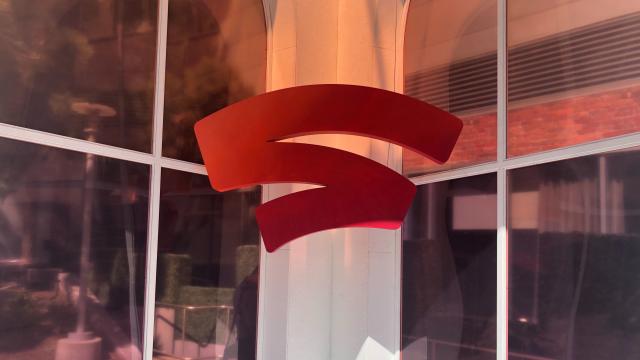This week, Google announced its fancy new Stadia game-streaming service to the world—though the question of just how the tech giant is planning on monetising it remains quite open.
It’s not clear whether users will gain access to Stadia’s stable of games by purchasing individual titles, paying a monthly subscription fee, or even be able to play for free in an ad-supported model.
Speaking to Business Insider on Friday, some industry analysts were sceptical that the last option is viable, given the immense costs of developing blockbuster game titles and the need for development firms to know they will be able to turn a profit.
“In a perfect world for Google, it would be an ad-based model as the company isn’t that successful in ‘for-pay’ services,” Moor Insights & Strategy principle analyst Patrick Moorhead told the site.
“… The reality is that it would take decades to get the gameplay and content optimised for that model.”
Another analyst, eMarketer forecasting analyst Eric Haggstrom, told Business Insider that the $4 billion in-game ad market is currently mostly made up of lower-quality mobile games. But he saw several areas where Google might be able to inject advertising, suggesting that Google could also turn to a Fortnite or Apex Legends-style model in which basic gameplay is free but users can pay for add-ons like skins and cosmetic items:
“If you’re a new battle royal game that just came out and you want to get people playing your game, ultimately the best place to advertise would be within other games that are similar,” Haggstrom said.
Haggstrom thinks the Google service is likely to adopt a similar approach to the mega-popular Fortnite, which doesn’t charge players to download its game, but instead allows for in-game purchases of “skins” and other cosmetic items.
This type of in-game purchase model could make sense, he believes, given Stadia has been touting an open platform with very few barriers to entry.
Gamers are also notoriously fickle, and many are already reaching the end of their patience on nickle-and-dime tactics like microtransactions, so it’s hard to see them adapting well to a model that requires interrupting their playthroughs every so often to be bombarded with ads.
Ultimately, however, the expenses of running an ad-supported model may be too great for Google to bear. Existing competitors typically go with subscription models.
Google VP Phil Harrison suggested to Polygon that the service will require spending immense amounts of money to work in the first place; Stadia will be, at least in theory, simultaneously streaming games at HD resolutions at high framerates to millions of users, and it’s suggested that it will have the capacity to do so at far higher graphical fidelity (and scale, such as 1,000-player Battle Royale matches) than existing consoles.
“It is a public record that in 2019, Google will be spending $13 [$AU18] billion in infrastructure and capital expenditure,” Harrison told the site. “So this is a very significant investment for the company.”
Beyond how, exactly, users will gain access to Stadia, other questions about the service remain. One is whether foregoing ownership of individual titles in exchange for access to a streaming platform that can set its own terms is worth the tradeoff.
Another is whether Google can build partnerships with industry players wary of upheaval and/or jump wholesale into in-house game development, a tricky business that sometimes goes horribly wrong for even industry titans like Bethesda (the ruinous release of Fallout 76, for one).
As the Verge noted, Google is also leaning heavily into YouTube and Twitch integration as a promotional tool, as well as a Crowd Play feature that will allow gamers to play with their favourite streamers, but pulling this off without exposing those streamers to harassment and trolling could be difficult.
